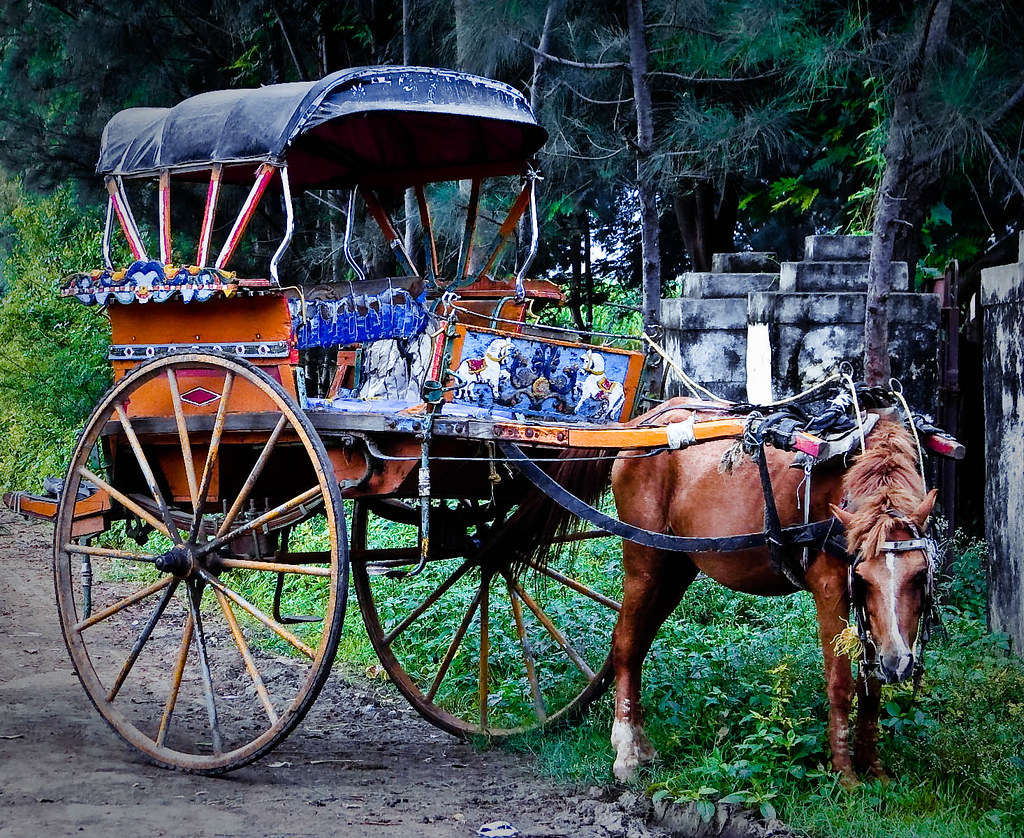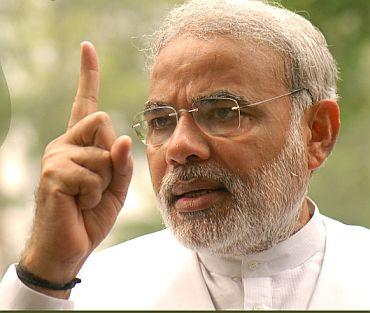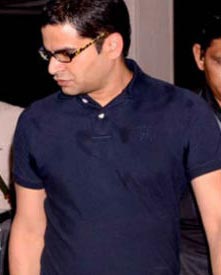Narendra Modi struggles to overhaul India's labour laws
कुछ रास्ते हैं
Arun Shourie's critique is simple: Modi does not need a Palaniappan Jaitley as FM

Why a forthcoming rally in Bihar is so crucial for NaMo and SuMo

Indian Prime Minister Narendra Modi is again facing dissent from members of his own camp who oppose proposals that would make it easier for companies to do business. .... The country's top 11 unions -- the biggest of which is linked to Modi's ruling party -- have called for a nationwide strike on Sept. 2. They are resisting his plan to merge 44 labor laws into four, a move that would simplify some of the world's most rigid rules for hiring and firing workers. ......... "If there's no satisfactory reply from the prime minister, the strike will continue," Baij Nath Rai, president of the Modi-linked Bharatiya Mazdoor Sangh, said ..... The union will oppose "tooth and nail" any policies by any government that go against the interests of workers, he said. ..... One of the most controversial provisions is allowing companies with as many as 300 workers to lay them off without government approval. The cap is currently at 100, while existing retrenchment compensation is three times lower than proposed. Another is an attempt to make it tougher to form unions. ...... The government and unions failed to reach consensus on key issues such as retrenchment, closure of factories, formation of unions and minimum wages at a meeting on Sunday ..... The country's biggest union is linked to the ideological parent of Modi's Bharatiya Janata Party. While it differs from unions connected to the main opposition Congress party and Communist groups, they all see eye to eye in opposing Modi's overhaul of India's labor laws. ....... Successive Indian governments have failed to change the laws, fearing a backlash from unions and working-class voters. ..... Modi is treading carefully ahead of an election later this year in Bihar, one of India's poorest states and home to about 100 million people. He's already facing opposition from farmers over a bill to make it easier for companies to acquire land, opening him up to criticism that he cares more about big business than about the poor. ...... "Modi has been caught between a rock and a hard place" ..... "If he moves ahead he will lose votes. If he doesn't then investors will lose faith in him." ..... Economists and business groups say existing laws incentivize firms to stay small, hurting productivity and preventing the majority of workers from accessing legal safety nets.
About 81 percent of Indian laborers were "vulnerable" in 2010 because they didn't get regular wages
, the second-worst ratio among 81 countries tracked by the World Bank.
कुछ रास्ते हैं
- एक रास्ता है confrontation का जो मार्गरेट थैचर ने अख्तियार किया, कि जाओ बंद हड़ताल करना है तो करो, खुद भी थक जाओगे, लोग भी तुम से थक जायेंगे, और मजबुरन खुद ब खुद काम पर वापस आओगे। शायद ये मोदी और भारत के लिए ठीक नहीं होगा
- दुसरा रास्ता है education का ------- labor law reforms देश और खुद मजदुर के हित में क्यों है इस बात पर व्यापक स्तर पर तर्क वितर्क हो। शायद ये रास्ता ज्यादा अच्छा है। लेकिन मुश्किल ये है कि टाइम प्रेशर है।
- तीसरा रास्ता है इसको पहले स्टेट लेवल पर अमल करो। लेकिन ऐसा करने से एक पीढ़ी चली जाएगी। धीमी गति विकास क्या खाक विकास।
रास्ता नंबर दो: Build A Strong Case, and market it hard. Be willing to compromise a little.
ये तो Land Bill के जैसा हो गया। भारत को double digit growth rate के रास्ते पर ले जाने के लिए दोनों की जरुरत है, Land Bill और Labor Bill दोनों की।
Land Bill stuck in the Parliament: PM Modi may have to rethink Jaitley as FM ये तो Land Bill के जैसा हो गया। भारत को double digit growth rate के रास्ते पर ले जाने के लिए दोनों की जरुरत है, Land Bill और Labor Bill दोनों की।
- जिस job guarantee को आप ढूँढ रहे हो वो job create कौन करता है? Entrepreneur . तो उस बन्दे का हाथ पाऊँ बाँध के रखे रहो तो वो अपना काम नहीं कर पाएगा, तो फिर वो job creation का काम कैसे करेगा?
- इंडिया में labor mobility नहीं है इस लिए बड़ी तादात में foreign investment नहीं आ रही है। देश आगे नहीं बढ़ रहा है।
- अगले जेनेरेशन की सोंचो। जो नौकरी आप कर रहे क्या ये चाहते हैं कि आपकी संतान भी वही करे कि उससे अच्छा करे?
Arun Shourie's critique is simple: Modi does not need a Palaniappan Jaitley as FM
The NDA government has some – and not inconsiderable - achievements to its credit. Among them: the passage of the insurance, coal and minerals bills, the small factories bill that will end inspector raj for small units, the successful holding of the coal and spectrum auctions, the NJAC bill, the rollout of the Jan Dhan Yojana, the decontrol of diesel pricing, and building further on the UPA’s Aadhaar-based and direct cash transfers scheme. The PM’s own contributions to foreign policy and efforts to highlight cleanliness through Swachch Bharat are surely commendable. ...... Even outside areas that need legislation, the Modi government has been simply too timid in deregulation and administrative reform - two areas that don’t require parliamentary numbers and are perfectly amenable to Modi’s decisive actions. ......... Jaitley's strengths are articulation, a good understanding of the art of political repartee, and a sound legal mind, as befits a lawyer. But his inadequacies are blighting the possibility of success. He does not seem to have an eye for detail, as a result of which his babus are leading him by the nose (consider the disastrous Rs 40,000 crore MAT demand on foreign investors and the complicated ITR form dished out by his taxman that would have taken tax terrorism to every home). His stringent black money bill will, if passed, make corruption worse, as mistrust rises to new levels in tax administration. ......... Jaitley’s political judgment can also be questioned. Not only did he misjudge his own chances of being elected MP by deciding to fight from Amritsar (where he lost, when he could have easily won from Delhi, his home base), he also led his party to defeat (along with Amit Shah) in the Delhi assembly polls. Worse, he completely misjudged the political opposition to the land acquisition law by provoking a counter-consolidation through the second-time issue of the ordinance. Bills are not passed by riding roughshod over opposition sentiment, but by smartly finessing their ability to do damage. ...... Jaitley's real problem is that he is a Delhi insider and hence less suitable to lead a revolutionary change in economic thinking under the Modi government. He would have been very good in I&B, Defence or External Affairs or Law, even education, but is probably the wrong man for the crucial finance ministry. ......... shifting Jaitley now would be a political blunder, but Modi clearly needs to give him three effective junior ministers who are all about execution and delivery. ...... Shah’s handling of allies has also been poor, if not disastrous. He has alienated the Shiv Sena by humiliating it after the BJP emerged as the biggest party in Maharashtra in the October assembly elections. He may be doing the same in Punjab, where the Akali Dal is trying to distance itself from the BJP. The party is losing allies in Tamil Nadu, which may not matter, but even parties who were not anti-Modi (BJD and AIADMK) are now playing hard-to-get. Only N Chandrababu Naidu and Ram Vilas Paswan remain strongly in the NDA camp, but they too cannot be taken for granted. ....... Maybe, just maybe, it is the Peter Principle at work: he may have been promoted to a level of his incompetence.Arun Shourie critique offers pointers on what Modi must fix in his remaining 4 years
Arun Shourie, Disinvestment Minister and later Communications Minister in Atal Behari Vajpayee's cabinet, has offered a devastating critique of the Modi government's performance so far . While he has noted Modi's achievements in diplomacy and other areas, but his criticism of the Modi-Arun Jaitley-Amit Shah power troika is ultimately a critique of Modi's own style of functioning. .......... Modi has to understand the importance of compromise to get the opposition to pass important legislation. The fact is the Land Bill and GST cannot pass without opposition support. This means accepting delay as part of the process and working with the Congress and other parties to get a reasonable bill through. Here again, Jaitley has been a problem. The current GST bill is a moth-eaten one, and delay cannot make it worse, but possibly make it better. A moth-eaten GST bill may be better than no GST at all, but for a bill that has been more than 10 years in the making, surely another couple of months can’t do it harm?Shourie slams Narendra Modi: 10 things he said
There is a big gap between perception and promise, and projection and performance. ...... Investment has not picked up. The government can't ignore India inc warnings. The government needs to wake up. Investors still have hope but the industrial sector is waiting for concrete moves. The growth claims are only to make headlines and the government only wants to manage headlines. ....... India needs labour reforms. There was no need for land bill controversy. Ordinances were ill-advised. They led to disruptions. BJP supported the previous Land Bill. Allies were not taken into confidence. Modi must embrace the opposition. No reform can take place without the oppositions' support. The opposition is ganging up against Modi and the BJP is frightening others. ....... The monogrammed suit was inexplicable, a critical mistake. Don't understand why he wore it.Modi's California Tour in September; First PM to Visit Silicon Valley in 66 Years
Former Prime Minister Jawaharlal Nehru had visited San Francisco in 1949. ..... 15% start-up companies in Silicon Valley have Indians as founders or co-founders. ...... ''I hope his time is not monopolised by billionaires and big companies. Silicon Valley is so much more than that. It is the culture of start-ups and the enabling ecosystem that makes it what it is,'' said Vinod Dham, a former Intel vice-president. Dham is also known as the Father of the Pentium chip. .... His Nepal visit was the first bilateral trip by an Indian Prime Minister in the last 17 years. .... And with his upcoming trip to Israel later this year, Modi will be the first Indian Prime Minister to visit the country.Bihar Asssembly polls: RJD plans tonga poll campaign

Why a forthcoming rally in Bihar is so crucial for NaMo and SuMo
The saffron party is considering announcing a chief ministerial candidate in Bihar if a Narendra Modi rally in Muzaffarpur doesn't draw enough crowds. ..... July 25 rally at Muzaffarpur. ... if enough people don’t turn up at the event, the party should declare a chief ministerial candidate to insulate Modi from any possible debacle. ...... reminiscent of the strategy the BJP adopted in the midst of the Delhi assembly election campaign earlier this year. Initially, the party’s position was clear – there will be no chief ministerial candidate, and the Modi card will be used just as it was in Maharashtra, Haryana, Jharkhand and Jammu and Kashmir.





